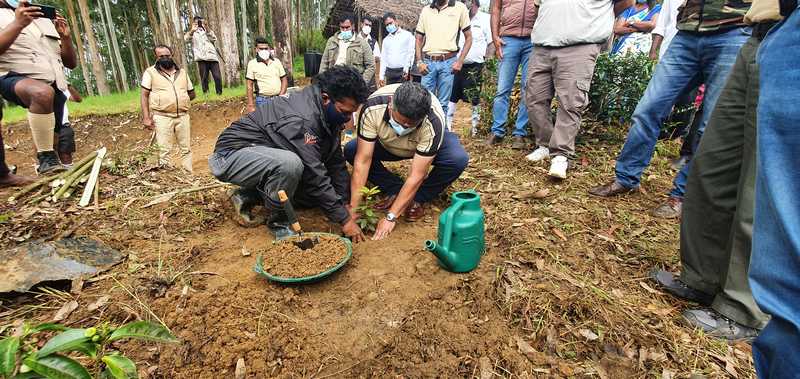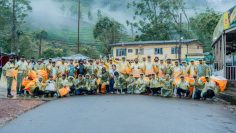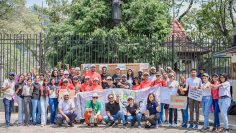
Hayleys Group launches flagship project ‘Kirulu’ to lead biodiversity conservation efforts
- Initiative to support Sri Lanka’s commitment to global Bonn Challenge
- Mahaweli Authority to support project as technical partner
- University of Wayamba to conduct annual assessment of conservation areas
Iconic diversified Sri Lankan conglomerate Hayleys PLC announced the successful completion of Phase I in its flagship biodiversity conservation initiative ‘Kirulu’, focused on restoring biological ecosystems and preserving natural habitats within High Conservation Value Areas (HCVAs).
The project’s first phase led by the Hayleys Plantations sector’s Talawakelle Tea Estates PLC (TTEL), a driving force of the Group’s historic biodiversity preservation agenda, is focused on ecosystem restoration and maintaining biological corridors across the hill country. Following an initial tree-planting programme of 1,000 saplings, TTEL will use GPS mapping to analyze ecosystems and ecological behavior at identified sites, and ensure the sustenance of plant nurseries and field projects while monitoring progress through frequent biodiversity assessments.
Hayleys Group CFO and Head of Group Sustainability, Choliya De Silva said: “In August 2021, the UN Report on Climate Change 2021 warned of a ‘code red for humanity’ highlighting significant environmental disruptions across the globe. A month later, the World Economic Forum called out the need for significant work to be done to reduce greenhouse gas emissions, reverse biodiversity loss and invest in renewable energy and climate financing.
“Sri Lanka is blessed with rich, vibrant ecosystems. Project Kirulu is our united, integrated commitment as a Group to leverage our business synergies and diverse network of talented sustainability representatives towards protecting these indigenous and threatened species. There is no better time to come together to shape a greener future for our nation and support global biodiversity commitments.”
The second phase of the project is set to expand biodiversity conservation to adjacent areas of importance, including rainforest reservations and waterfall ecosystems and will see more Hayleys Group companies uniting to drive momentum around conservation efforts.
As the project’s technical partner, the Mahaweli Authority of Sri Lanka will offer advisory services, while the University of Wayamba will engage its students to conduct annual biodiversity assessments of areas covered under the project.
“We are pleased to join hands with our valued partners, and nine Hayleys Group Sectors, to conserve and support our nation’s rich ecosystems. We have set an ambitious target for 2030 to enhance biodiversity in areas spanning five times the size of the area occupied by the Hayleys Group sites today, and Kirulu is one way of taking this blueprint to reality,” De Silva explained.
Notably, these biodiversity conservation efforts by Sri Lanka’s largest diversified conglomerate supports Sri Lanka’s pledge to the “Bonn Challenge” to restore 200,000 hectares of degraded and deforested land as part of a global 2030 target of 350 million hectares.

Today, biodiversity conservation forms a key part of the Hayleys Group’s ESG framework in addressing environmental sustainability. In 2020 Hayleys Plantations became the first plantations business globally to officially commit to the Science Based Targets initiative (SBTi) to reduce greenhouse gas (GHG) emissions. The Sector has established biological corridors to develop a self-sustaining model for ecosystem restoration by connecting agricultural land with natural forests.
Hayleys Fabric, the Group’s textile manufacturing pioneer, led conservation efforts by voluntarily reserving close to 9 acres of wetland and 20 acres of rubber estate adjoining its site as respective Green Belt and Wetland Biodiversity Zones under the guidance of the Central Environment Authority in the last financial year. Teams spanning the diverse world of Hayleys have also engaged in efforts to plant 44,500 saplings during the same period in partnership with community organisations and external stakeholders.






